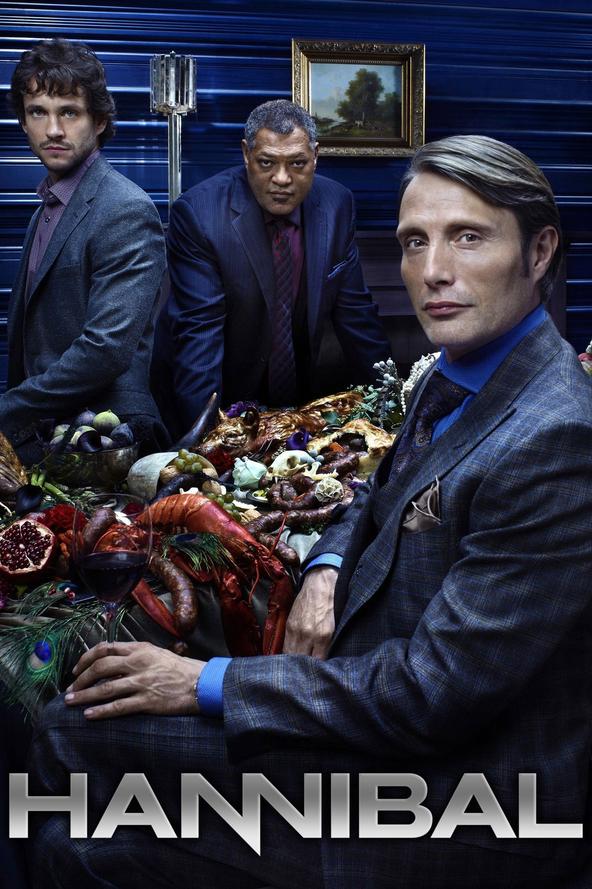Bringing elephants across the Alps was ultimately not worth the trouble for Hannibal in the long term. Although the idea of employing elephants generated initial shock and boosted morale, their tactical value rapidly diminished after the difficult journey. The elephants failed to provide sustained battlefield advantages, and the hardships of crossing the Alps reduced their numbers drastically. Their presence created momentary psychological impact, but this military gamble did little to alter the ultimate fate of Hannibal’s campaign.

Hannibal entered Italy with 37 elephants, according to Livy, but by the time he completed his Alpine crossing, only one or three remained. The journey took a severe toll: the mountainous terrain, harsh conditions, and scarcity of food decimated the number of elephants. Practical battlefield utility shrank alongside their numbers. While elephants once fought effectively in Iberia and Gaul, their role in Italy was limited and soon negligible.
In tactical terms, elephants proved nearly useless after the initial phases. By the time Hannibal reached Italy proper, there was only one elephant left, serving more as a vantage point for reconnaissance than a fighting force. This lone animal allowed Hannibal to observe and direct troops with enhanced visibility but offered no significant offensive power. From a military perspective, elephants did not turn the tide in significant battles on Italian soil.

The elephants did have a key moment of notable contribution during the dangerous Alpine crossing. When Hannibal’s forces were trapped in an ambush, the frightened elephants charged and broke the enemy blockade. This breakthrough helped the army to avoid a devastating defeat in the mountains. Apart from this episode, their practical use faded as the campaign progressed.
Psychological effects, however, highlight some strategic benefits. The sight and sound of elephants approaching impelled fear and confusion among Roman soldiers unfamiliar with such beasts. Early on, the rumor that Hannibal crossed the Alps with elephants amplified alarm throughout Rome. The mammals symbolized Carthaginian power, often described as monstrous creatures from another world. This psychological edge bolstered Hannibal’s troops’ confidence and unnerved Roman generals, prompting hasty and sometimes poor decisions to counter the perceived threat.

Despite the short-lived tactical utility, the presence of elephants carried a strong propaganda value that resonated for centuries. These creatures became iconic symbols tied to Hannibal’s daring campaign. The fact that even one elephant deserted the journey remains a famous historical detail, debated and discussed over 2,000 years later. The dramatic image of elephants crossing treacherous mountains contributed to the legend and lasting memory of Hannibal. Without the elephants, Hannibal’s legacy and the narrative of his invasion might not be as vivid.
From a strategic viewpoint, Hannibal miscalculated Roman resilience. He expected a limited war and underestimated Rome’s capacity for total warfare. The victory at Cannae, despite its brilliance, ultimately hardened Roman resolve, leading to Carthage’s destruction. In this broader context, the risk and effort of transporting elephants gained little military advantage or strategic benefit.

It is also relevant that Hannibal left about 11,000 infantry and a large cavalry force in Iberia to hold conquered territories rather than boosting his Italian invasion force. This indicates possible limits on troop numbers and loyalty, which might explain the decision to use elephants for shock value rather than relying solely on additional infantry and cavalry.
| Aspect | Effect of Elephants |
|---|---|
| Number at start of crossing | 37 elephants |
| Number after crossing | 1 to 3 elephants survive |
| Tactical battlefield role | Minimal to none after Alps; one used for command vantage |
| Psychological impact | High initially, intimidating Romans, raised Carthage morale |
| Key moment | Elephants broke blockade during Alpine ambush |
| Long-term military outcome | No decisive advantage gained from elephants |
| Legacy and reputation | Elephants became symbolic of Hannibal’s daring campaign |
In summary, the choice to bring elephants across the Alps was a calculated risk. Their physical and tactical impact was scarce after the initial phase. Psychological effects and morale benefits added intangible value. The elephants contributed briefly during a critical moment in the Alps but were not a sustainable force for war in Italy. Ultimately, the elephants were more symbolic than strategically useful.

- Elephants suffered massive losses crossing the Alps, leaving only one or three by the time combat in Italy began.
- Their battlefield impact was limited; the lone surviving elephant served as a command platform rather than a weapon.
- Psychological shock and morale boost were the elephants’ main strengths, intimidating Romans and inspiring Carthaginians.
- Elephants played a critical role once, breaking a barricade during an Alpine ambush, but were otherwise ineffective.
- Long-term, Hannibal’s war strategy failed regardless, and the elephants did not alter Rome’s eventual dominance.
- Elephants became a lasting symbol of Hannibal’s campaign, maintaining a powerful legacy in history and popular culture.
Was It Worth the Trouble for Hannibal to Bring His Elephants With Him?
So, was it worth it for Hannibal to haul those massive elephants across the Alps? The straightforward answer: not really, at least not in the long run. But boy, in the short term, things get a little more interesting.

Hannibal’s march into Italy with war elephants is one of history’s legendary feats. But unpacking the value of this audacious strategy reveals a blend of hype, hope, and harsh realities. Let’s dive deeper into what those mighty beasts actually brought to the table—and what they didn’t.
Long-Term Letdown: The Elephant in the Room

First, let’s talk hindsight. Hannibal badly misjudges the Romans. He expects a limited, measured conflict. His plan? March in, win a few battles, and Rome will simply settle.
Instead, his victory at Cannae backfires spectacularly. Far from securing peace or dominance, it provokes Rome into ruthless total war. The result? Hannibal’s dream ends with Carthage’s destruction.
So, were those elephants worth the trouble when you consider that bigger picture? Long-term, absolutely not. All the effort to bring them didn’t change the ultimate outcome. Rome adapted, rebuilt with brutal determination, and crushed Carthage.
Short-Term Military Value: A Big, Slow Bust
On the battlefield, elephants are theoretically impressive—massive “tanks” of ancient warfare. But by the time Hannibal majestically kisses the Alps, he barely has one elephant left.
In fact, as legend and historians Livy and Polybius tell it, Hannibal starts with only 37 elephants at the Alps. By the time he’s in Italy, it dwindles to just one or three. Crossing treacherous marshes finishes them off.
Practically, they’re useless wartime assets by then. The elephant’s temperamental nature can backfire spectacularly—causing chaos in their own ranks. So tactically speaking, those big beasts did little to sway battles in Italy.
The Hidden Value: Confidence and Psychological Impact
But wait—before you write off those elephants as merely cumbersome and tragic casualties, consider their less tangible benefits.
First, the elephants boost the morale of Hannibal’s own troops. These are men facing one of history’s toughest marches—through freezing mountain passes no one thought possible. Bringing elephants is a daring act of bravado. It says, “We’re unstoppable!”
How much did that confidence matter? That’s impossible to measure. But armies march better believing they’re invincible, right?
Meanwhile, the psychological blow to the Romans is huge—at least at first. Imagine the Roman soldiers hearing rumors of those monstrous creatures rumbling through the Alps. A giant grey monster parade must have felt like a nightmare come to life!
This shock factor rattles Roman commanders early on. It fuels fear and rash decisions, playing right into Hannibal’s hands. Even after the elephants fade away, their reputation as terror-inducing “monsters” lingers. They become mascots for Hannibal and Carthage, symbols of an unstoppable force.
Moments of Glory: When Elephants Saved the Day
The elephants were far from useless during every moment of the campaign. For example, when Hannibal’s army is ambushed in the Alps and trapped by a blockade, the terrified elephants charge through and break the barricade.
Thanks to this, what could have been a deadly trap becomes a daring escape. That single moment highlights the elephants’ raw power when used effectively.
Later, Hannibal reportedly rides his last surviving elephant during battles to get a tactical bird’s-eye view of the battlefield. Whether that provided a major advantage is up for debate. Still, it shows elephants were at least occasionally useful beyond brute force.
Elephants in Battle: More Bark Than Bite
In battles across Iberia and Gaul—before reaching the Alps—Hannibal’s elephants play a more traditional role. They serve as battlefield tanks, pushing enemy lines and breaking morale.
But during the long Italian campaign, elephants barely make appearances. The soggy Alps and marshes stubbornly claim their lives. The arduous journey drains their numbers to near extinction.
Consequently, Hannibal’s tactical edge from elephants essentially evaporates. More than a few historians argue they are little more than a symbolic presence at that stage.
Why Not More Troops Instead?
Here’s a question: If elephants are so problematic, why bring them instead of fresh troops? Hannibal leaves about 11,000 infantry, plus cavalry, behind to guard his territory in Iberia.
But sources like Polybius suggest these men simply refuse to follow Hannibal to the Alps. Patriotism, loyalty, or plain fear keeps them stationed in Iberia instead of reinforcing the mountain march.
This shortage of loyal troops may explain why Hannibal chooses elephants, despite their risks—they add shock and morale value without needing reluctant soldiers.
PR Brilliance or Fool’s Errand?
Finally, let’s talk about public relations—yes, even in 218 BCE, PR matters.
The fact that people are still talking about Hannibal’s elephants more than 2,000 years later says something. These beasts become iconic, turning Hannibal into an almost mythic figure.
Would Hannibal be remembered so vividly without his elephant army? Probably not. The image of a general crossing impossible mountains with beasts no one had seen was terrifying and unforgettable.
On the flip side, was the trouble and loss worth it solely for fame? Probably not when you weigh costs and benefits strategically.
In Conclusion: The Elephant in Hannibal’s Campaign
Was bringing elephants worth it for Hannibal? It depends on your timeline and what you value. Long-term, it was a strategic miscalculation leading nowhere but eventual Carthaginian ruin. Short-term, their tangible military usefulness in Italy was almost zero, with only flashes of utility during the Alps crossing and early battles.
Yet, these war elephants had undeniable psychological and symbolic power. They built morale, shocked enemies, and helped create one of history’s most memorable military campaigns.
Think of them as ancient symbolic tanks—clumsy, unreliable, but awe-inspiring. For ancient soldiers, facing these massive creatures was like staring down mythical monsters. This intimidation factor may have tipped a few early encounters Hannibal’s way.
So, in the end: Were elephants a military asset or a historical publicity stunt? Both! They symbolize the risks Hannibal took—and the audacity of his vision. Not every bold move wins wars, but it sure makes history unforgettable.
Food for Thought
- Could Hannibal have succeeded without the elephants? Probably, but maybe his troops wouldn’t have crossed the Alps with such daring.
- Are elephants more a symbol of ancient psychological warfare than actual battle machines? It looks that way.
- How do you balance bold innovation against practical strategy? Hannibal’s elephants embody this eternal military dilemma.
What do you think? Did Hannibal’s elephants bring him closer to glory or just a thundering headache along the way?



